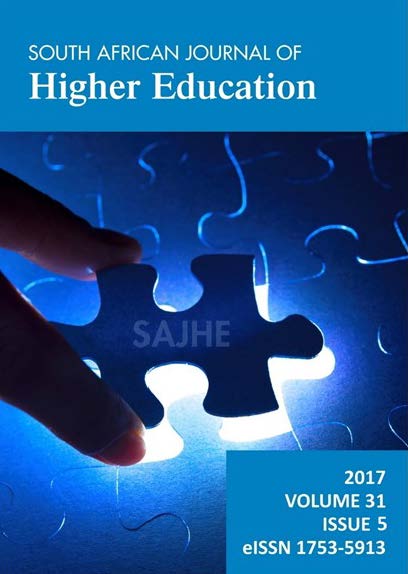Educational theory as rhythmic action: From Arendt to Agamben
DOI:
https://doi.org/10.20853/31-5-1345Abstract
Traditionally, educational theory has been couched as modes of human action through concepts such as poiesis and praxis. Inasmuch as poiesis and praxis have significantly shaped educational theory, we argue that such modes of action – if considered as mutually exclusive – do not sufficiently explain the interrelationship between educational theory and practice. Firstly, we extend the notion of action as explained by Arendt. Next, we offer an account of Agamben’s ‘opening of rhythm’, which integrates the notions of poiesis and praxis to pave the way for an understanding of educational theory as creative will that moves human action from enacting the unexpected into ‘an increasingly free and rarified atmosphere’. Secondly, in re-examining the Aristotelian concepts of poiesis and praxis, we argue that Agamben’s ‘opening of rhythm’ extends the Arendtian notion of action to perform the unexpected, and offers an as yet unexplored lens through which to understand the nexus between educational theory and practice.
Downloads
References
Agamben, G. 1999. The man without content, trans. Georgia Albert. Stanford: Stanford University Press.
Agamben, G. 2002. Remnants of Auschwitz: The witness and the archive, trans. D Heller-Roazen. Cambridge, Massachusetts: The MIT Press.
Arendt, H. 1958. The Human condition (2nd edition). Chicago: The University of Chicago Press.
Aristotle, 2004. The Nicomachean Ethics, trans. J.A.K. Thomson. London: Penguin Books.
Carr, W. 2006. Education without theory. British Journal of Educational Studies, 54(2): 136-159.
Dewey, J. 1916. Democracy and Education. New York: Macmillan Free Press.
Lenz, C. 2011. The key role of education for sustainable democratic societies (In Huber, J. & Mompoint-Gaillard, P. (eds.) Teacher education for change: The theory behind the council of Europe Pestalozzi Program. Strasbourg-Cedex: Council of Europe Publishing.
Lewis, T.E. 2011. The Poetics of Learning: Whitehead and Agamben on Rhythm, Philosophy of Education, 249-256.
Lewis, T.E. 2014. Education as Free Use: Giorgio Agamben on Studious Play, Toys, and the Inoperative Schoolhouse, Studies in Philosophy and Education, 33(2): 201 – 204.
MacIntyre A.C. 1981. After virtue. London: Duckworth.
MacIntyre, A.C. 1988. Whose justice? Which rationality? Indiana: University of Notre Dame Press.
MacIntyre, A.C. & Dunne, J. 2002. Alasdair MacIntyre on education: In dialogue with Joseph Dunne, Journal of Philosophy of Education, 36(1): 1-19.
Thomas, G. 1997. What’s the use of theory? Harvard Educational Review, 67(1): 75–104.
Downloads
Published
How to Cite
Issue
Section
License
This journal is an open access journal, and the authors and journal should be properly acknowledged, when works are cited.
Authors, copyright holders, may use the publishers version for teaching purposes, in books, theses, dissertations, conferences and conference papers.
A copy of the authors' publishers version may also be hosted on the following websites:
- Non-commercial personal homepage or blog.
- Institutional webpage.
- Authors Institutional Repository.
The following notice should accompany such a posting on the website: This is an electronic version of an article published in SAJHE, Volume XXX, number XXX, pages XXX “XXX", DOI. Authors should also supply a hyperlink to the original paper or indicate where the original paper (http://www.journals.ac.za/index.php/SAJHE) may be found.
Authors publishers version, affiliated with the Stellenbosch University will be automatically deposited in the University Institutional Repository SUNScholar.
Articles as a whole, may not be re-published with another journal.
The following license applies:
Attribution CC BY-NC-ND 4.0





